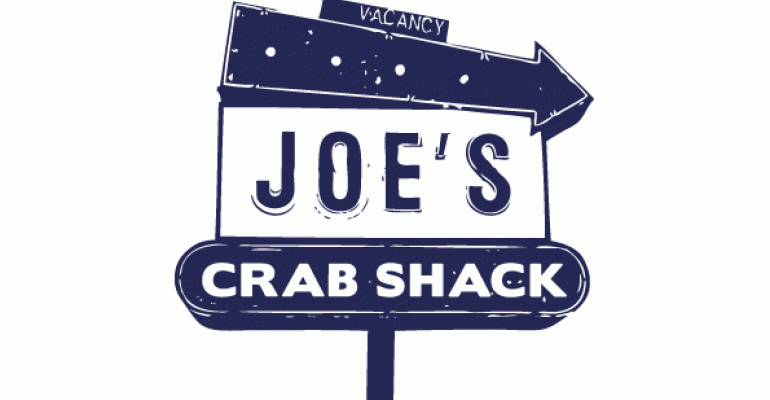Joe’s Crab Shack, the casual-dining seafood chain, is testing a no-tipping policy at 18 of its 131 restaurants, and CEO Ray Blanchette said he is optimistic about its prospects.
Blanchette, president and CEO of Houston-based Ignite Restaurant Group Inc., told analysts last week that Joe’s has been testing the no-tipping policy for several months, and ramped the model up to 18 restaurants in the past 30 days.
“What makes us optimistic is the restaurant that has been in test the longest is gaining the most traction,” Blanchette told analysts, with the restaurant teams apparently improving with time and guests understanding the new policy better.
The nationwide no-tipping discussion got a boost in October when Union Square Hospitality Group announced plans to phase out tipping at all 13 of its full-service restaurants in New York City while raising menu prices.
Union Square Hospitality founder and CEO Danny Meyer said the process would start in late November with The Modern, the company’s fine-dining restaurant at the Museum of Modern Art. It will continue at the remaining restaurants over the course of 2016.
Meyer said the practice of tipping was an obstacle in the company’s efforts to “provide even more meaningful career opportunities and advancement for our 1,800 employees.”
Blanchette agreed with Meyer, adding that tipping was “an antiquated model,” and that Joe’s policy “reflects our commitment to not only be in a great place to eat, but to be a great place to work.”
Blanchette said Joe’s was not adding a service charge to checks, but was raising prices to accommodate the policy change.
In test restaurants, he added, “servers, hosts, bartenders are paid now with higher fixed hourly wages, and it’s expected to result in an improved team atmosphere, a significant reduction in turnover and greater financial security for the employees.”
Blanchette added that the no-tipping service model puts the brand ahead of others in the face of an increased push for higher minimum wages, including Tuesday’s nationwide “Fight for $15” protests in more than 270 cities.
The Ignite CEO said the new hourly wages at Joe’s were calculated based on employees’ historical earnings in the given restaurants, as well as managers’ server rankings.
“Each manager has sort of rankings of the servers based on any number of criteria: you know, guest compliments, upselling,” Blanchette explained, and managers peg compensation to that.
“We use their historical compensation as the sort of benchmark,” he said, adding that it was as “fact-based as you can be.”
Blanchette said he expected staff turnover to fall in the test restaurants.
“The reason I expect that turnover is going to go down is it's very different to quit a job where you make, say, $14 an hour than it is to quit a job where you are making $2.25,” he explained. “If you make $14 an hour at Joe’s, you are making $14 whether you are [working] Monday lunch or Friday night, and now our servers can borrow against those earning as real income. It’s a much better employee value proposition.”
The no-tipping compensation model also helps improve service for large restaurant parties, Blanchette noted, because servers are more likely to share duties when they aren’t expecting the large-party tip.
“In terms of large parties, we expect that service levels are going to increase,” he said, adding that Joe’s Crab Shack does a high level of large-party business.
In addition, Blanchette said the no-tipping model is expected to give the concept better control over labor costs and also improve employee recruitment efforts. He said a number of workers “prefer to make a wage as opposed to those employees who prefer to chase tips. We see this is an opportunity to really continue to upgrade the talent within our organization.”
As of Sept. 28, Ignite owned and operated 131 Joe’s restaurants and 23 Brick House Tavern + Tap restaurants in 33 states.
Blanchette said the company has not yet talked about extending the test to the Brick House concept.
“But, quite frankly, when you think about a typical Brick House experience, it would actually in my opinion be even stronger,” Blanchette said, adding that some customers stay three hours to watch a sports game.
“While we’re still early in the test phase, we are receiving very positive feedback from our guests and our employees,” he said. “So this is something we are going to be very careful with. This is something we want to learn and understand at a very high level, but it is something that we are extremely excited about.”
Contact Ron Ruggless at [email protected].
Follow him on Twitter: @RonRuggless





